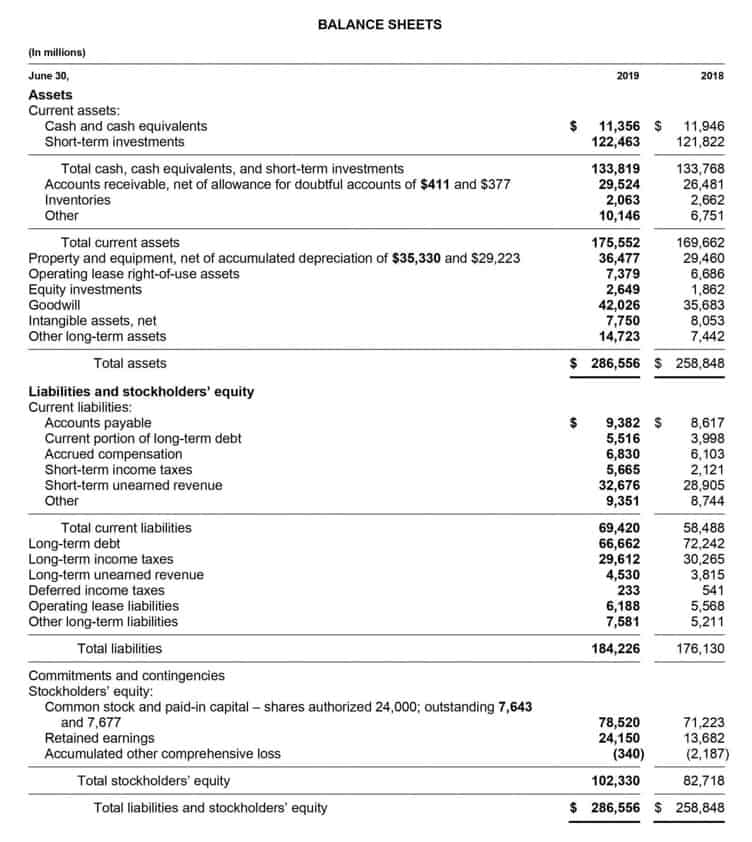
To record a capital lease in your business accounting system, you must first determine whether the business owns the leased item. If the lease is classified as ownership, the item is recorded as an asset on the balance sheet at its original cost (called cost basis). The current and accumulated expenses for the lease are amortized, with part of the cost written off as an expense for the term of the lease. Make sure you include all the details of a capital lease to demonstrate the legitimacy of the lease. A piece of equipment with a market price (FMV) of US$100,000 and a useful life of 5 years is leased to a lessee for four years. The borrowing rate for the firm is 8%, and the rate implicit in the lease is 7%.
Streamline Your Lease Management with Leasecake
Sec 179 and bonus depreciation allows companies to take a larger deduction for assets, regardless if the asset is fully paid with cash. This means that a piece of equipment that was leased during the year can be fully or partially deducted against https://www.bookstime.com/articles/fractional-cfo income even if only a few lease payments were made. This works well with companies who want to get the benefit of purchasing equipment but don’t want the negative impact on cash flow. For tax purposes, operating lease payments are similar to interest payments on debt; these payments are considered operating expenses on the business tax form for the year. Leasing vehicles and equipment for business use is a common alternative to buying.
What is the impact of a capital lease on the income statement?
- Capital leases and operating leases appear very differently in accounting.
- In all leases, the lessee acquires an asset, called a right of use (ROU), and a liability (the obligation to make lease payments).
- They then spread out the cost over time as depreciation or interest expense.
- And as with a purchase option, it’s common with vehicle and equipment leases.
- A finance lease is a lease arrangement that more closely resembles a purchase of the asset.
- Large generators can cost tens of thousands of dollars so the owner might choose to lease one.
For example, if a company capital leases a fleet of cars, the depreciation and maintenance costs for the lease term would be the responsibility of the lessee. Through this blog, you will learn about capital lease vs. operating lease, and when you’re done reading, you’ll be able to decide which type of lease is better for acquiring or renting assets for your business. We have shown below the impact of capitalizing an operating lease on a company’s financial statements. Note that the financial statements on the left side are statements before any adjustment is done.

Can You Write Off a Capital Lease on Your Taxes?
Find out how GASB 87 lease accounting software provides functionalities needed to maintain compliance with GASB No. 87 and other financial reporting … The last two criteria do not apply when the beginning of the lease term falls within the last 25 percent of the total estimated economic life of the leased property. Lessees who report under US GAAP (ASC 842), follow a two-model approach for the classification of lessee leases as either finance or operating. For lessors, the classification categories for leases are sales-type, direct financing, or operating. ASC 842 allows lessees to classify leases as either finance or operating based on the criteria described below. The interest expense recorded on the income statement is equal to the difference in the imputed interest expense between the prior and current year.
- The leased asset isn’t an inherently greater liability for the lessee simply because the lessor includes a purchase option.
- The conditions of the lease specified in the lease agreement determine if a lease is classified as a finance lease or an operating lease.
- Before the alteration, leases were either capital or operating leases; with the new standard, capital leases are now called finance leases.
- We have assumed a simple straight-line depreciation on the asset in the example above.
- While a distinction between operating and finance lease accounting treatment and presentation still exists, ASC 842 mandates that both types of leases must be on the balance sheet for US GAAP reporting.
- The lease and the corresponding asset value would be required to be reported on the balance sheet.

The lease agreement typically outlines the conditions under which ownership is transferred. It marks a strategic departure from other leasing arrangements where ownership remains vested with the lessor. The decision shapes bookkeeping how a business utilizes assets, directly impacting its cash flow, tax deductions, and overall flexibility. Operating leases are ideal for businesses—especially in biotech or life sciences—with evolving equipment needs and a focus on cash flow and adaptability. With Accruent Lx Contracts, users can quickly identify underperforming assets, stay informed about key dates like lease expirations, and make well-informed decisions based on comprehensive data analysis.

However, during the lease period, the possession stays with the lessee, but the legal ownership right stays with the lessor. They don’t have the choice to buy the place when the lease ends; the landlord still owns it. Jean Murray is an experienced business writer and teacher who has been writing for The Balance on U.S. business law and taxes since 2008.
Identify Cost Savings Opportunities with MRI’s Auditing Services

If your business wants tax savings tied to depreciation and ownership of the asset, a capital lease may be more strategic. If you prefer simplified accounting, lower risk, and consistent expense deductions, an operating lease can be the better option—especially for short-term leases or rapidly evolving industries like biotech. A finance lease is a long-term agreement where the lessee assumes ownership-like responsibilities, typically using the asset for most of its lifespan. It appears as both an asset and liability on the balance sheet and often includes a purchase option at the end of the term.
- Businesses must assess their leasing needs and financial objectives to determine the most suitable lease structure.
- The lessor, if the arrangement is a operating lease, can claim the vehicle(s) as an asset, and thus accrue the tax benefits arising from the depreciation and the expense of maintaining it.
- Capital leases come with significant advantages, especially for companies that eventually want to own the leased asset.
- Do you understand the details of each of those leases, or do you have that information readily available?
- These leases generally don’t allow for purchasing the asset at the end.
- The kind of lease your business should opt for ultimately depends on the type of asset to be leased and the nature of the lease’s benefits.
- The asset could be land, building, equipment, websites, brands, or anything else.
- For accounting purposes, a capital lease (sometimes called a “finance lease”) is reflected on the company’s balance sheet as an asset, with a value determined by the regulations for setting a cost basis for the asset.
- This includes proper depreciation and interest expense recognition.
- If title transfers to the lessee, the lease is classified as finance.
- The treatment of capital and operating leases on the books is very different.
It is important to keep in mind that aspects such as useful life and fair market value are set out at the moment of signing the contract, based on a number of estimates. That is where the risk comes from – a recent example of original estimates being derailed is the diesel scandal, whose shadow has been looming on the residual value of cars. Such leases are common in the construction industry because construction equipment is a costly purchase. But even though the operating lease vs capital lease asset has only been leased and not sold, the accounting would treat the asset as “owned” in the lessee’s ledgers.